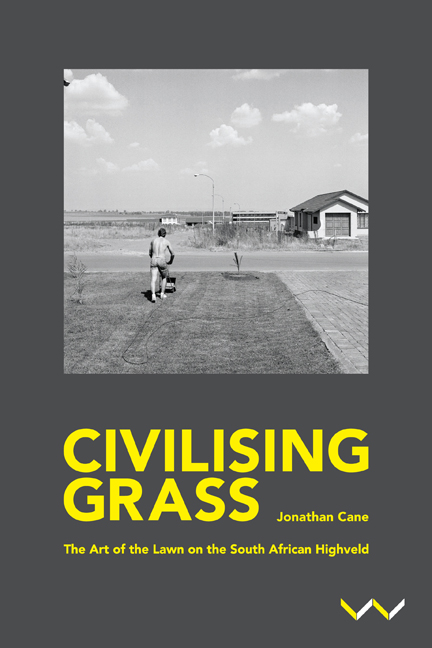3 - Planning the Modern Lawn
Published online by Cambridge University Press: 29 October 2019
Summary
The earth should never be too kind: it spoiled people.
— Ivan Vladislavić, Flashback Hotel: Early StoriesA montage from a 1935 Architectural Review article by W. A. Eden (see Plate 7) shows the design for a high-rise apartment block superimposed on top of Blenheim Palace, with its eighteenth-century landscape gardens. The resulting image provocatively envisages not only the replacement of a national monument with functionalist mixed-class dwellings but also that those modern dwellings could sit comfortably within the iconic gardens of the palace. The image's rhetoric was part of an energetic international debate about public housing and the role that high-rise developments could play in the provision of modern accommodation.
This chapter includes a number of geographical locations, physical spaces like KwaThema and Welkom, in addition to a collection of plans, models, notes, lectures, collages of landscapes, many of which remain unbuilt. These sites and strategies dialectically relate to a third space, what Henri Lefebvre (1991) calls ‘representational space’. The architect's plans are what Lefebvre refers to as ‘representations of space’. The attempted applications, successful building schemes, in the dust and mud, as it were, are the domain of ‘spatial practice’, ‘the material reality in which the body is situated and nature is transformed’ (Warf 2006: 445). These spatial practices result in the everyday spaces that people produce, inhabit and act within, ‘the artistic views of geographic reality that allow room for the imagination and unrealized possibilities’ (445). Inherent in this chapter is a kind of tension between the full realisation of professional landscapes and lived realities. The questions worth asking here are: How were the plans eventually executed? What lapses, slips, amendments, changes, rebellions, exist between the paper place and proper place? What is the relationship between the plans, images and records and the actual buildings and their dissemination, reception, repetition, rejection, valorisation? How did these spatial practices circulate during apartheid and after?
Premeditated lawns
The chapter focuses on three key actors. The first was a collective of radical architecture students at the University of the Witwatersrand (Wits) in the late 1930s. Paul Harold Connell, Charles Irvine-Smith, Kurt Jonas, Roy Kantorowich and Frans J. Wepener produced a collective publication in 1939 for a high-rise ‘native township’ set in verdant parklands, which they also presented at the 1938 Wits Town Planning Congress and Exhibition (which they organised).
- Type
- Chapter
- Information
- Civilising GrassThe Art of the Lawn on the South African Highveld, pp. 91 - 134Publisher: Wits University PressPrint publication year: 2019



